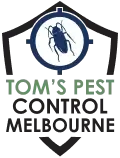Prompt, Affordable Same-Day Pest Control in Melbourne – From $129.
- Home
- Pest Treatments
- Termite Inspection & Treatment
- Ant Pest Control
- Bed Bug Treatment
- Beetle Pest Control
- Bird Proofing
- Borer Pest Control
- Cockroach Control
- Flea Treatment
- Fly Control
- Fox Trapping
- Mites Control
- Mosquito Pest Control
- Moth Control
- Possum Removal Service
- Rodent Control
- Silverfish Treatment
- Spider Control Treatment
- Wasp Control Services
- End of Lease Pest Control
- Commercial Pest Control
- Office Pest Control
- Restaurants & Cafes Pest Control
- Hospitality Pest Control
- Education Facilities Pest Control
- Hospital & Aged Care Pest Control
- Pest Control Food Industry
- Factories & Warehouses Pest Control
- Government Buildings Pest Control
- Assets & Facilities Pest Management
- Farming and Agriculture Pest Control
- Strata Pest Control
- Construction Pest Control
- Termites
- Pest Info
- Pest Inspections
- Contact
- Home
- Pest Treatments
- Termite Inspection & Treatment
- Ant Pest Control
- Bed Bug Treatment
- Beetle Pest Control
- Bird Proofing
- Borer Pest Control
- Cockroach Control
- Flea Treatment
- Fly Control
- Fox Trapping
- Mites Control
- Mosquito Pest Control
- Moth Control
- Possum Removal Service
- Rodent Control
- Silverfish Treatment
- Spider Control Treatment
- Wasp Control Services
- End of Lease Pest Control
- Commercial Pest Control
- Office Pest Control
- Restaurants & Cafes Pest Control
- Hospitality Pest Control
- Education Facilities Pest Control
- Hospital & Aged Care Pest Control
- Pest Control Food Industry
- Factories & Warehouses Pest Control
- Government Buildings Pest Control
- Assets & Facilities Pest Management
- Farming and Agriculture Pest Control
- Strata Pest Control
- Construction Pest Control
- Termites
- Pest Info
- Pest Inspections
- Contact
Drywood Termites
Home » Termite Facts & Identification » Drywood Termites
While most termites live in underground colonies, drywood termites are different. They prefer living in woods and not making any contact with soil. Instead, they receive their moisture from humid air, which is why they are commonly found in coastal areas. In addition, these pests like to stay hidden, which is why their presence in your structure or furniture may go unnoticed for long.
Identification
Drywood termites vary in size because of their caste. Soldiers are about three-eighths of an inch long, while reproductive males and females are about one-half inch long. Most termites are pale brown, but some have colours varying from light yellowish tan to dark brown. Winged termites have clear or smoky grey wings. All adult termites of this species have thick, oval waists and short legs.
Drywood termites reproduce swarmers that leave the colony on maturity to form their colony. While many swarmers are looking for mates, only some manage to create their new colonies. Those who find a mate also find a suitable nesting site. The king and queen of the new colony build a small nest to make space for the queen to lay her eggs.
The king is responsible for mating periodically with the queen so she can continue developing her eggs. Once the queen lays the eggs, they hatch within several weeks, after which the king and queen get busy looking after the immature termites. These termites become workers after two moults and begin serving the couple by finding food for them.
Drywood termites also build colonies in wood and other cellulose material, which have no connection to the ground. Therefore, you will likely spot these pests in attic wood or any area with very little moisture available.
Drywood termites take their nutrition from wood. They can break down wood particles easily and absorb the wood. Workers first bring in food for the king and queen of the colony. After that, they provide food to the alates and young.
Behaviour
Drywood termites can eat and damage anything made of cellulose, including support beams, flooring, and walls. If these pests chew on these structures, they can give you expensive home repairs.
Threats
Drywood termites are different from other termite species that require plenty of moisture for survival. These termites don’t even need soil to be able to build their nests. They can extract water from any wood source for survival. Also, they can produce water through their digestive process.
Termite Control Service
Drywood termites get into the woods through tiny holes to form new colonies. To avoid a drywood termite infestation in your home, you must seal all cracks and crevices in a structure. Early detection of these pests can save your home the hassle of undergoing extensive termite treatments.
At Tom’s Pest Control, we offer reliable, affordable, and effective drywood termite control services. We guarantee to eliminate drywood termites from your home or business using the highest quality products. Our technicians are fully trained and licensed for drywood termite control and use safe, effective methods to ensure the complete removal of the termite colonies.
With our pest control services, you can rest assured that your home or business will be free of drywood termites for years to come.
Call Us Today
Contact Tom’s Pest Control Melbourne today for safe and effective drywood termite control in town.
Frequently Asked Questions
What are Drywood Termites?
Drywood termites are found on hard, dry wood in homes and offices. It is common for these pests to live on structural timbers, furniture, photo frames, and fences. Unlike other termites, these termites do not make colonies below the soil. Instead, they live in woods and extract the required water from the wood they eat.
What are The Signs of Drywood Termite Infestation?
Since these termites excavate the wood, they live upon, finding if they infest your property can be difficult. However, if they are present on your property, you are likely to find their discarded wings or swarms near light sources, as these creatures are attracted to light. You may also see their droppings that resemble tiny mounds of tiny pellets.
Do These Ants Have Worker Castes?
No. Drywood termites have no worker castes. Each colony has about 2500 members, and the work of caring for the king and queen and providing them with food is taken care of by immature termites.

